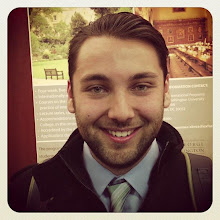This, my final post about my trip to Spain, is an homage to the blog of one of my closest friends, who spent her summer studying abroad in Sevilla. You can find her blog, and her ‘Commentary at La Campana’ here. La Campana is one of the oldest and best-known cafes in central Sevilla, and it is from here that I wish to share with you some of my concluding thoughts about Sevilla and Spanish Culture. Having been in three very different countries in the past three weeks, I feel I am in the unique position of being able to compare my impressions of the three different cultures. Denmark is, generally, a quiet and orderly country, where everyone waits their turn in line, and where people generally keep their emotions to themselves while in public. However, Danes can be as kind and generous as anyone else once you get to know them and become their friends. Pretty much all Danes speak English, and the second they discover you are a foreigner, they immediacy switch to English, preferring you not to butcher their Danish Language, which I assure you is an inevitability. Russians are pushy in lines and organization is not a top priority. They are even more reserved than Danes when they first meet you. They do not smile with people they do not know and more often than not, from what I experienced, they are antagonistic towards others, especially foreigners. Many of them in the tourist industry are unaccustomed to Americans, and can at times be almost hostile towards them. They expect that you speak Russian, and even if they understand what you ask in English, they will probably respond in Russian. Spaniards are much more openly emotional than either the Danes or the Russians. It is not uncommon to hear someone yelling into their cell-phones in exasperation or frustration, a sight you would rarely see in Copenhagen. They are also much more friendly on the streets, even with people they do not know. Many of them do speak English, but if they know you speak even a little Spanish they are very encouraging and appreciative of the gesture. Spaniards are also much more pushy in lines. It was funny to watch them board the plane in Copenhagen, the steward had to keep announcing that only certain seats were allowed to board, not that that stopped the Spaniards from forming a mob around the door.
Some other random thoughts I would like to share about Spain. The people are so accustomed to warm weather in the summer that they find November to be cold. I arrived in Seville with t-shirts and no jackets, anticipating the idyllic 70° (21°C) weather, which I found warm compared to Denmark and Russia. Nevertheless, you could always tell who the Spaniards were because they were all wearing jackets with scarves. It was absolutely crazy that they could be cold in such perfect weather, but they were.
Spaniards really do take a siesta in the afternoon. I was very surprised on my first day there, when at two o’clock everyone started closing their shops and heading home until five or six in the afternoon. Traditionally, the siesta was designed to get people out of the streets during the hottest part of the day, but I assumed that wouldn’t be true in the winter, when it is nice outside all the time. Nevertheless, everything closes down, and you either have to find a café to wait it out, or better yet, head back to your hostel for a nap.
Overall, it was a fantastic trip to Spain. I am so glad I had the chance to return to the country, and I look forward to my next trip, whenever that may be. I would highly recommend the city of Seville to anyone looking to travel to Spain. It is not as touristy as Madrid or Barcelona, but it is still a wonderful city with wonderful people. I can see why so many people who visit the city fall in love with it.


